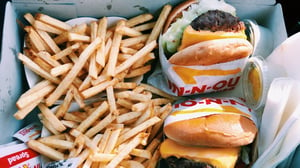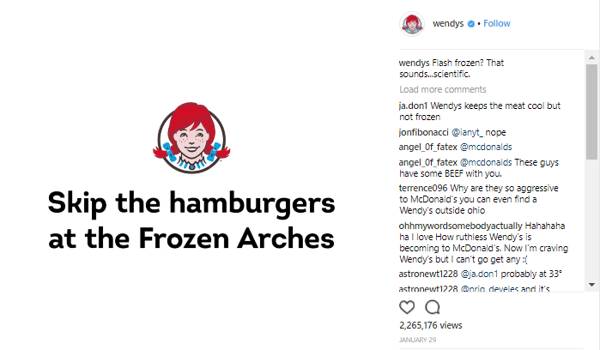
What QSR Brands Need to Know When Advertising on Social Media
With an estimated 50 million people dining at over 200,000 fast food restaurants in the United States alone every single day, competition in the industry is fierce.
Fast food joints, also called quick service restaurants (QSRs), not only have to compete with other restaurants in their category - they also have to compete with a slew of other dining options, from cafes to salad bars to full service restaurants. Customers have low switching costs and aren’t afraid to take to the Internet to voice any dissatisfaction they may have with fast food brands.
With social media, employees are also another key stakeholder group brands need to consider. Disgruntled current and ex-employees can easily take to Facebook or Instagram to air their “insider’s take” on “what we really do to the food”.
Given the global shift towards healthier eating and the rise of veganism in the US by 500% since 2014, QSRs face challenges on multiple fronts: distinguishing themselves from their competitors including the growing number of “fast casual”restaurants, staying relevant while combating brand boycotts and negative perceptions of the industry, and guarding brand reputation while maintaining customer and employee experience.
In our latest study, we analyzed over 20,000 comments across 11 QSR brands’ social ads running in the US and Canada to understand these challenges better and provide insights into how QSR brands can effectively address them. The study can be download free here.
The double-edged sword of social media
A misstep can be very costly for brands, with poor customer service being amplified online 2x more compared to good service experiences. In addition, it take twelve positive experiences to make up for one unresolved negative experience, writes fan experience expert and consultant Ruby Newell-Legner in her book Understanding Customers.
On the flip side, a trail of positive comments can lead to exponentially positive social endorsement. It’s well known that social media has an amplifying effect, both in a positive as well as a negative direction. But in our analysis, we were surprised to discover that for the fast food industry, the positive outweighs the negative, with people being 1.9x more likely to share love for a QSR brand on an ad than to badmouth it.
Opportunities for growth and differentiation
There is more encouraging news for QSR brands looking not only to drive engagement numbers up, but to stand out from the crowd. Our analysis also showed that the ad creative itself trumped the product or even the company brand as the #1 topic of discussion within the comments section of the ads we analyzed. This indicates a tremendous opportunity for brands to stand apart with highly engaging creative.

For instance, one of the ads we analyzed from Wendy’s received over 7,000 comments on a single ad post with the most frequently occurring words used in the comments (“McDonald’s”, “Wendy’s”, “frozen”, “savage”, and “shade”) being clearly related to the ad creative itself. The ad was created by Wendy’s as a roast on competitor McDonald’s, who had just recently released ads stating that their burgers were “flash frozen”. Wendy’s immediately jumped on the opportunity to respond with a video ad saying:
“Flash frozen? That's two Fs for effort. Wendy's only uses fresh never frozen beef on every hamburger every day. Skip the hamburgers at the Frozen Arches. Head to Wendy’s. You can taste the difference for yourself”.
Customers were quick to respond with comments like:
Hahahahaha I love How ruthless Wendy’s is becoming to McDonald’s. Now I’m craving Wendy’s but I can’t go get any :(
Frozen Arches. The savagery💀
Wendy’s is coming for you @mcdonalds you can’t compete
A treasure trove of information for product development
In an industry where new menus are rolled out every few weeks and where trends and tastes evolve rapidly, simply looking at typical quantitative engagement metrics such as number of Likes, comments, and shares is not enough. It is not an achievement for an ad to rack up hundreds of comments if 90% of those comments are of negative sentiment.
But going even a step further beyond the binary positive-versus-negative sentiment measurement, how can brands understand exactly how customers a reacting to a new combo meal or menu item that has just been rolled out or taken off the menu?
The comments section of ads are a treasure trove for product teams when it comes to product feedback. Not only do you get customer reactions in real-time, but these reactions tend to be more honest and unvarnished than those found on a customer feedback form. When more than 1,000 customers are shouting “bring back spicy nuggets”, you might want to consider that.
How QSR brands can manage their social media in a cost-efficient way
How can fast food brands counter reputational threats and also tap into opportunities to let their brand shine on social media? Comment moderation, timely responses, and analysis of feedback received are the keys.
It takes enormous time, effort, and investment to be able to not only moderate but process and make sense of all comments in-house. There is, however, a reputable and cost-effective solution. BrandBastion works with some of the world’s top brands, using AI in combination with trained industry teams to sort and process comments ranging from harmful comments that are removed, customer inquiries that are responded to, or customer feedback that is aggregated efficiently and accurately.
This opens up a vast array of data-driven and qualitative insights and allows QSR brands to truly hear what their fans have to say and to give their customers what they want.
There is much to be gleaned from just listening to what customers have to say. If you’d like to learn more, we’ve prepared an in-depth, 39-page report of our analysis that is free for download.
